 |
Vision Long Island |
A MEssage From VIsion LonG Island Why We Need To Stop Calling People NIMBY's: Does calling opponents of Mixed Use, Smart Growth, or any other development project or proposal NIMBYs help?
The most recent failure of large scale projects in Hempstead Village, Plainview, Cerro Wire, as well as numerous moratoriums throughout Brookhaven and other municipalities, are examples of Long Island being ruled by the NIMBY's. What does the word NIMBY mean? According to Wikipedia: NIMBY (an acronym of "Not In My Back Yard") describes the opposition of residents to the nearby location of something they consider undesirable, even if it is generally considered a benefit for many. Examples include: an incinerator, an ethanol plant, a nuclear-power plant, or a prison. The term is usually applied to opponents of a development, implying that they have narrow, selfish, or myopic views. Do we really believe that all folks who oppose development on Long Island have narrow, selfish, or myopic views? Does calling folks NIMBY simply foster the us vs. them mentality in development and planning? How can we raise the bar with quality development proposals that meet community needs without a dialogue or rational discussion about what those needs are? In short, are we building an understanding with local communities or simply calling them names? Who are these NIMBY's? After meeting thousands of residents in the majority of communities on Long Island, most of the NIMBY's are good, smart, hard working people who are struggling to deal with impending changes in their community. They often feel that the developer or their government is not working in the best interest of the community and that the folks calling them a NIMBY have their own narrow, selfish, or myopic interests that will forever change the character of their neighborhood. Maybe we should join civic associations in our own community and understand the work that these NIMBY's do. It is often the tireless and thankless tasks of clean ups, code enforcement, maintenance, fundraisers, community events and, yes. tackling difficult development proposals. Let me be perfectly clear: we are not happy when communities oppose progressive and well-organized plans. I often joke that I could double my staff and probably double my salary by fighting projects, calling for moratoriums and ultimately killing projects that have not garnered community support. Having said that, despite their frustration, our organization, most developers and many local governments know that they need to work with the public in order to get a successful plan, project, or development application moving forward. Is their hope? When we first started in Huntington, 95% of folks wanted more input in development decisions. The first wave of community involvement is to stop projects and wield some power in the planning process. The next step is to be more proactive and move projects forward. There are civic leaders who do support plans and progress- witness, Connie Kepert from Middle Island, Richard Johannessen from Rocky Point, Neal Lewis from the Neighborhood Network, and countless others. Their are about forty civic associations on Long Island that are working very proactively to make their communities better and manage to not simply oppose change. Courageous stands on very difficult land use and development issues are not easy for community leaders and when there are folks who take these positions, we should embrace them. At best, we should work with the NIMBY's from the start. These folks ARE going to be deciding the future of many development projects on Long Island. We should, at the very least, listen, learn, adapt our proposals, and try to work with community leaders as projects emerge. In the end, if we are so enraged, angry, obsessed, and feel the behavior of NIMBY's is unfair, let us keep our anger and frustration to ourselves, yell about it over a beer, work out, go for a run, or take an anger management class. Let's not just call folks who are opposed to development names. We can do better. I am asking folks to take a pledge to say that we will not be calling folks NIMBYs from here on out. Please e-mail or call us with your thoughts on this matter and if you agree to take the pledge.
Eric Alexander |
|
6th Annual Smart Growth Summit Coming November 16th - Register Today! Schedule Released!
Workshop topics include: State of the Towns” Breakfast; Preserving Existing Housing Stock; Placemaking by Design (technical worksession); Sewers & Infrastructure; Projects of Regional Significance- Nassau; Codes & Regulations (technical worksession); Affordable Housing In a Changing Market; Projects of Regional Significance - Suffolk; Smart Growth & Green Building (technical worksession; Global Warming & Clean Energy Solutions; Transit-Oriented Development; “Civic Summit” (by invitation only); Downtown Revitalization; Sustainability, NYS, PlaNYC, & Congestion Pricing; and the “New Voices For Smart Growth” Luncheon
EVENT SCHEDULE 7:45-8:15 REGISTRATION 8:15-9:45 MORNING PLENARY: “STATE OF THE TOWNS” 9:55-11:05 WORKSHOPS I Affordable Housing in a Changing Market Global Warming and Clean Energy on Long Island Sewers & Infrastructure Downtown Revitalization Developments of Regional Significance 11:10-12:20 WORKSHOPS II Transportation - Transit Oriented Development Greatest Misses Anti-Gentrification: Preserving Existing Housing Stock Developments of Regional Significance – Nassau Sustainability, PlanNYC and Congestion Pricing 12:30-1:45 LUNCHEON 1:50-3:00 TECHNICAL SESSIONS Placemaking 101: Design Solutions for Local Communities Codes & Regulating Plans: From Vision to Implementation Smart Growth & Green Building: LEED ND- Making the Connection Civic Summit *invited Sponsorships are available. Register today! Click here for the full brochure about the event or here for the registration form.
Long Island Housing Partnership Holds 6th Annual Chairman's Symposium on Affordable Housing
The Long Island Housing Partnership’s 6th Annual Chairman’s Symposium, held on October 29th, brought together a number of regional leaders and experts to discuss the implications of the lack of affordable housing for Long Island’s future. To face the oncoming sea change in population and demographics, each of the speakers agreed that we need a lot of new housing and fast. Eric Alexander said, "the crux of the problem is that the government needs to consider the redevelopment of our commercial corridors and investment in infrastructure. In regards to the public process, we need more education and then implementation." He continued, "we all need to go out and join civic groups." He noted that we must change certain key elements first. "Greenfields are still preferred because there are more costs to redevelop downtown because of demolition and infrastructure. There needs to be a density bonus or offset for redevelopment because now it's still cheaper to build on greenfields."
According to statistics provided by Matt Crosson of the Long Island Association, the number of people between the ages of 25 and 44 is still decreasing, with 122,477 people leaving since September 2007. The crisis created by the decreasing population of people between the ages of 20 to 34, along with the oncoming retirement of the baby boomers, can only be stymied by attracting talented, young people back to the region with affordable housing and an appealing environment. In order to facilitate these changes and bring an estimated 127,000 units of housing to the region in the next ten years, officials and leaders in the field need to implement the following strategies: inclusionary zoning legislation with local incentives, adaptive reuse of vacant state lands, and reinvestment in our downtowns and infrastructure. Long Island has to provide more of a mix of housing options. This would include increasing the number of rentals; currently, only 17% of Long Island’s housing stock are rentals.
To address the housing shortage and battle “out migration” of young professionals to New York City, Long Island must take swift action to change the planning process and the layers of red tape and misconceptions that impede progressive projects. We must confront the fear of density and affordable housing through education, working with civic groups and public officials, and increasing engagement amongst politicians and zoning authorities.
Oyster Bay Promotes Environmental Bond Act
For more information, visit the North Shore Land Alliance's website here.
Brookhaven Community Preservation Fund Up For Vote On November 6th
The Brookhaven CPF would work similarly to the programs in the eastern towns: A two percent real estate transfer fee is assessed on the buyer each time a property is bought in the town. Under Brookhaven's plan the first $250,000 of developed properties and the first $150,000 of vacant lots would be exempt. The proceeds from the tax would be earmarked for open space preservation in the town. To help promote affordable housing and to encourage young families to settle or remain in the area, the Brookhaven plan, includes a feature that exempts qualified first-time home buyers from the 2 percent transfer fee. The CPF would also institute a development rights transfer program. Under the program, 25 percent of the development rights on land purchased with CPF monies will be available for developers to purchase for use across the town and across different zoning classifications. Any money from the sales of development rights will be rolled back into the CPF to purchase more open space and farmland. This progressive vote addresses key concerns for Suffolk and the region of Long Island; its passage will help to preserve the best aspects of LI and encourage practices that will sustain its vitality. For more information, visit Brookhaven.org or ABCO's website.
Proposal 2 will ensure that Suffolk County residents' tax money will continue to protect open space, farmland and clean water. Placed clearly at the top of the ballot, this proposal raises millions for the Suffolk County Farmland Protection program which prevents over-development and the ensuing traffic congestion. It will also fund the Suffolk County Drinking Water Protection Program that improves water quality and safeguards marine areas. Extending this program to 2030, which the ballot initiative does, will also generate much needed funds for environmental protection. In addition, every cent is eligible for state and federal matching funds that will go towards these projects, which in turn will help to stabilize and reduce general county property taxes. For more information, visit Yes For Open Space. A November 1st editorial in Newsday discussed the issue of land preservation on Long Island. It can be found here.
Great Neck Fights To Keep Workforce Housing
In an article published in the New York Times on November 1st, Corey Kilgannon wrote about rent-stabilized, workforce housing apartments in Great Neck. Without the support of the residents or the local elected officials, the owners of Academy Gardens recently applied to demolish the 2-story apartment complex in favor of luxury condos, after years of neglecting the property and attempting to vacate the tenants through other means, claiming that it is not their responsibility to provide the workforce housing that the Village and County do not. Village officials said the process for demolition and new construction such as this is arduous and costly, while Mayor Kreitzman is working with the State Division of Housing and Community Renewal, who oversees rent-controlled properties, to ensure that the tenants are not displaced, as there is already a severe lack of affordable housing available on Long Island.
BRONX Holds Hearing On Congestion Pricing
Despite the tempting festivities of Halloween, over twenty people and organizations prepared written testimony before the commission members. Testimonies from the public were 50-50 in support and opposition. Overall, the audience understood that regardless of their disagreements, action has to be taken towards mass transit extensions, with disincentives for driving into Manhattan's central business district and more benefits for the Bronx. A poll from Quinnipiac University found that citywide, 54% were opposed to the proposal. 74% of those polled were opposed to it in the Bronx. These results are odd considering that within the Bronx, 80% of the residents use mass transit, 20% own a car, and only 4% drive into the proposed designated area. This depicts a startling inconsistency between the public's views and the actual impacts of the plan. However, it does reflect the flaws of the plan. On one hand, it should not be called a PILOT. There should be a concrete strategy to reduce traffic congestion without raising the transit-fares for the subway, buses and bridges. There also has to been more honesty about London's congestion pricing plan, considering that the fee is now up to $14. While Vision Long Island supports the plan, there should be more clarity on the public benefits for Long Island. This would include further detail as to the use of the budgeted $20 million that would be generated and how it would address the region's mass transit issues. In short, there needs to be a real prioritization for Long Island's transit needs.
Islip Officials, Developer Reach Compromise on Pilgrim State
According to Newsday, "Islip officials have come to a compromise with developer Gerald Wolkoff in an important step forward for the development of the Pilgrim State Psychiatric Center site. Because Islip officials are unsure about Wolkoff's promise that his 460-acre mini-town will create unusually low amounts of traffic and sewage, both parties have agreed to check sewage and traffic levels at milestones along the way before the project can continue, according to Wolkoff and Islip Supervisor Phil Nolan. "Wolkoff said he is confident that the community will offer so many amenities within walking distance that the young, working residents of his community will be happy to travel on foot or on public transportation. The developer maintains that the project will generate only half as much traffic and sewage as technical guidelines predict." Click here to read more.
"Some first-time home buyers on Long Islanders are seeking HELP - the Homeownership and Economic Stabilization for Long Island Program, that is. HELP is a State Senate affordable housing grant of $25 million that provides aid to Long Islanders who are struggling to save enough for a down payment. "The Long Island Housing Partnership works with the companies and their employees on mortgage applications and closing costs... The grant, which also awards new homeowners $20,000 for home repairs, is geared to attract and retain workers on the Island, said Paul Markwardt, of BAE Systems." For more information, click here. |
|
Smart Growth and the Housing Downturn
The article contends that "the pattern this year is different from what the nation experienced in the last market downturn, in the early 1990s. At that time, infill and TOD did not perform better than other real estate products. 'The last time around, [city neighborhoods] didn't have the product,' [Patrick Phillips of Economic Research Associates] observed. 'There was no confidence in city government. NOw there's a better amenity base downtown, a better track record.'" David Winzelberg also discussed the subject in a recent post on his "Spaced Out" blog in Long Island Business News. He contends that, "with consumers restraining their spending, housing-related categories may fall most dramatically, especially condominiums. The top markets to watch, according to the report, are those that have positioned themselves as 24-hour cities with easy access to international markets. These markets all have a major international airport and/or shipping port, export-import hubs, an educated workforce and walkable residential neighborhoods. 'They have made a concerted effort to revitalize downtown areas or nearby ‘urban burbs’ that have made them magnets for corporate headquarters, business elites, the best and the brightest of the workforce as well as the largest share of investor dollars,' the survey reported." Read more on David Winzelberg's blog in Long Island Business News here, or see the article in the New Urban News here.
The report findings continue, stating that "shifting 60 percent of new growth to compact development by 2030 would have the same benefit as a 28 percent increase in US fuel efficiency... If combined, these policies would produce an even greater benefit." Smart Growth development is becoming increasingly important in the fight against global climate change. Though there has been increased government attention drawn to stricter fuel emission standards, more must be done in order to combat the longer distances commuters face to and from their sprawling communities every day. For more information, read the article in New Urban News here or click here to see more information on the report by the Urban Land Institute.
Long Island BUilders Institute's Bob Weiboldt Retiring
Mr. Weiboldt had a love and hate relationship with the Smart Growth movement in the beginning. He liked the ideas and alternate plans, but did not like the potentially inflexible standards that we were laying out in the early years. He has grown to both accept and promote Smart Growth projects throughout Long Island and has been instrumental in encouraging his members to put out very different types of projects. Probably his biggest challenge was moving his members into looking at their work differently. He was responsible for pushing them to look at townhouses, condos, inclusionary zoning, and smaller units. Mr. Weiboldt is highly attentive to the public process, both in theory and in practice, on individual projects. He often was an advocate for charrettes, visionings, focus groups, house parties, polls, anything that would engage the public in a nonadversarial way. His wars through the years with civic and environmental leaders were legendary. They brought out the best and worst in each other and that there remains a grudging respect for the role they have each played. He was pretty blunt about laying out the difference between the way the world looks from the view of a town or county planning department vs. how it looks from the ground. He once filled Brookhaven Town hall with 2,000 folks attacking a government planner's very restrictive rezoning proposals. In short, he is not afraid of bucking trends and will not blindly follow governmental planning inertia which, until recently, was the norm. Over the last decade plus, Mr. Weiboldt has moved his members at Long Island Builders Institute to produce very different projects that included Smart Growth, mixed use, green building, and affordable housing. He was instrumental in the expansion of the affordable housing movement that was dominated by not-for-profit human service groups and now includes all partners. He kept environmental groups, civics, government planners and Smart Growth advocates honest by challenging their assumptions and pressing forward with sometimes alternate, but oftentimes complimentary, plans. He found a way to work behind the scenes and in the public eye with intelligence, good humor and a long-term view of where Long Island is going. Contentious though he could be, he was an very effective advocate. His role as a leader of LIBI, both as a partner and an adversary, will be missed. For more information about the Long Island Builders Institute, click here to visit their website.
Canvas Magazine Highlights Green Building On Long Island
According to the article, the Town of Babylon is leading the way with a number of projects and initiatives. Last November, Babylon was the first town in the Northeast to set green building standards for the private sector- it will require that commercial, industrial, multi-residential buildings and new structures larger than 4,000 square feet must qualify for LEED-certification. The Tanger Outlet Center in Deer Park is expected to meet LEED-certification upon completion. Other green projects include those of developer Michael Posillico in Glen Cove and Island Park, Suffolk County Police Department’s 4th Precinct in Hauppauge, and Adelphi University’s new Centers for Recreation and Sports and Performing Arts. While many local townships across the United States are enforcing more green building codes, Long Island’s general public is only just beginning to seek out information about LEED certification. Residents still need more education on the benefits of green building to overcome doubts about the economic investments, which often see a full return in 10 or 20 years. The Long Island Power Authority (LIPA) is also offering financial assistance for projects seeking LEED certification through its Clean Energy Initiative. In addition, sustainable building may be a way for developers to compromise with NIMBYism and the fear of overdevelopment. Many Long Islanders oppose new development of any kind, so by advocating for buildings that are beneficial, rather than detrimental to the environment, the public has a choice and some control over the types of development occurring on LI.
Recently, three big developers have been in the news for the success and controversy of their projects. The Tall Grass village center in Shoreham, proposed by Alec Ornstein of the Ornstein Leyton Company, was approved by the Town Council on October 16th. The plan spent nearly four years in negotiations over concerns about the impact, rising property taxes and overdevelopment. In Hempstead, a large-scale plan was rejected from UrbanAmerica. The $2 billion proposal for 26 acres of downtown revitalization was turned down and criticized for its lack of affordable housing in a community greatly in need of a downtown revitalization. The third proposal is still in the midst of conflict. The Glen Isle Development Company’s proposal for Glen Cove will replace a 52-acre Superfund site, currently owned by the city, with 860 condominiums, a luxury hotel, office space, retail shops, and restaurants. The waterfront facilities will include marinas, docks and a ferry terminal. Local leaders such as Mayor Suozzi, are concerned about the lack of local infrastructure to support the sizeable project and County Executive Tom Suozzi feels that it may be too big in general. The article then points to communities such as Patchogue, Bellmore, Bay Shore and Islip, and the successes seen there with smaller projects such as Main Street revitalizations, beautification, and affordable housing downtown. These projects, which work within the context of the community, are more to scale, versus larger projects that seem to have been plopped down without regard for the environment. However, even the larger projects can be accepted with proper dialogue and communication between the developer, civic groups and local residents. With public hearings, community design sessions, and education on Smart Growth principles the developer has more of a chance to dispel “misinformation” and see the plan progress.
Tri-state Transportation Campaign and the MTA Fare Hike
The MTA currently plans to raise fares and tolls by an average of 6.5% in early 2008. Delaying a fare increase would also make sense because, by April, the fate of congestion pricing—and the hundreds of millions of dollars it would contribute annually to MTA capital projects—will be known. State Assemblyman Jim Brennan and State Senator Tom Duane have introduced bills in their respective chambers that would substantially increase aid to the MTA. The first would provide almost $665 million in operating assistance to the MTA (provided in a 50-50 state-local match), while the second would provide $39 million to subsidize fares for school children. Public hearings on the proposed MTA fare and toll increases will begin in early November. Click here to find out about the public hearings. |
|
New Survey Reveals Americans' Desire to improve Mass Transit and Existing Roads, Rather than Build New Ones
As evidence of the traction the issue has gained in the last few years, nearly three-quarters of Americans are concerned about the role growth and development plays in climate change. Traffic congestion is still a concern to many Americans as it continues to worsen in most cities in the country. 75% of those polled said that improving public transportation and building communities that don’t require as much driving were better long-term solutions for reducing traffic. Only 21% said that building new roads provided the best solution. Nearly 90% believe new communities should be designed so we can walk more and drive less, and that public transportation should be improved and accessible. 84 percent of Americans are overwhelmingly opposed to the privatization of public roads and highways, one of the key initiatives of U.S. Transportation Secretary Mary Peters. 80% prefer redeveloping our older, existing urban and suburban areas rather than building new housing and commercial development at the edges of our existing suburbs. Read more on this issue and see the report on Smart Growth America's website.
Aveda Brings Sustainable Paper from Nepal Home For the Holiday Season
The Lokta shrub, which is used to make the paper, is sustainably harvested and FSC certified. Aveda always practices fair business principals so the profit made by this community in Nepal really goes a long way for them. Special thanks to John Easterbrook for this news piece. Click here for more information.
Massachusetts Setting Example by Simplifying Language of Smart Growth
One of the planners who prefers to ''define smart growth in non-technical terms,'' Director Smith said, ''Think of Smart Growth as development similar to what we recall from one or more generations ago, characterized by vibrant neighborhoods, busy downtowns and abundant open space and public places.'' Its antithesis, he continued, is ''endless commercial strip development, long commutes, and residences barely within shouting distance of each other.'' Read more at smartgrowth.org and on the Standard-Times' website. |
|
Come Support a Benefit Event for the Coltrane Home In Dix Hills
Hear Our Song is a heartfelt, uplifting, and exhilarating night-out that reveals the universal stories of the ages and stages of our lives, through the experiences of five amazing women and the best music from West Side Story, Company, Baby, Songs for a New World, Hairspray, The Last Five Years, Follies, Brooklyn, Aida, Oh, Kay!, La Cage Aux Folles, Dreamgirls and more. Hear Our Song stars some of Broadway’s best-- Trish Rapier, Toni Seawright, Sonia Perez, Karissa Staple, and Navida Stein.. Each performance features a special auction after the show, so be sure to arrive at least a half hour early to see what’s in store. All proceeds from the auction and ticket sales go to The Friends of the Home of John Coltrane. All participants—from the Director, to the Producer, to the Musical Director and Arranger, to the entire cast and technical crew—are donating their time and talents to these performances. The show was originally conceived by former actor/director and marketing executive Joel Ehrlich. The show is directed by Joel, and was co-developed, created, and produced with award-winning writer, publicist, and accomplished pianist Joan Lazer. Hear Our Song is proud to have renown pianist and composer Jonathan Ido Friedman as musical director and arranger, and book by Susan DiLallo, recipient of the coveted Kleban Foundation Award, given annually to “the most promising librettist in American musical theater.”
Tickets are $50, with VIP seats with a special gift for $100. Tickets for students are available for $20. To order, call (631) 860-9200 or visit: www.thecoltranehome.org
It Takes a Village: Intergenerational Programs That Work Conference
While many young people are leaving Long Island in pursuit of affordable housing elsewhere, many older people are leaving for southern retirement communities or choosing to remain on the island, but moving into age-restricted communities. The unfortunate result is a separation of the generations. These circumstances pose real challenges to the normal balance, and urgently call for new and creative ways to encourage generational groups to communicate with one another, care for one another, and support public policies that don't divide them by age. It Takes a Village: Intergenerational Strategies That Work is designed to bring together Long Island's community organizations and its business community to create effective intergenerational programs and promote public policy that meets the needs of all generations. The conference takes place on Monday, November 12, 2007 from 9:00am to 4:00pm at the Charles B. Wang Center at Stony Brook University. Click here for a registration form, or visit Intergenerational Strategies' website here.
"Step it up" to address global climate change
Make a difference by motivating political representatives to become leaders. Gather together and hear speakers on topics such as climate change, local environmental actions on Long Island, and sustainable living. For more information on the event itself, click here. For more information on Step It Up, check out www.stepitup2007 or For more information on what you can do to address Global Warming go to: the Neighborhood Network's website. |
Eye Sore Of The Month & Sight For Sore Eyes
Eye Sore of the Month - Airport Plaza, East Farmingdale
Airport Plaza, in East Farmingdale, is the epitome of Long Island's sprawling strip malls. It is a sea of asphalt and cars sandwiched between unsightly ubiquitous strip mall architecture. The retail structures are unadorned , completely ignoring any of the site's interesting aviation history and context. The wide sidewalks are achingly vacant of people and activity. Even the sad attempt at a plaza, which consists of one planter with an edge for seating, seems haunted by the blank walls and vacant store in the background. Rather than utilizing the long stretch of wall to attract people with vibrant storefronts or windows to display the dynamic activity inside Dave and Busters, the building facades are as sterile and two-dimensional as an old Hollywood studio set. Perhaps the saddest aspect of Airport Plaza is the absence of any relationship between the structures themselves. To move between the two shopping centers, the movie theatre, and Applebees, one has to dodge between cars and delivery trucks. There are no sidewalks, crosswalks, or paths of any kind to reach each building. In addition, the absence of any signage indicating the presence of pedestrians not only discourages walkability, but also places the pedestrians at the mercy of the automobile. In what could have been a dynamic and bustling center of entertainment, restaurants, and retail, Airport Plaza is just another eyesore on Route 110.
Sight for Sore Eyes - Hicksville Shops and Museums
In general, the area around the Hicksville train station is as gray and somber as the station. However, there are a few significant structures adjacent to the station that embellish the area with color, lights, plants, and activity. "Peppercorns Restaurant and Catering" is a historic institution in Hicksville. Commissioned in 1893, it was the original firehouse and served the Hicksville community from that spot till 1932 when it was moved across the street to its current location. It remains a fine restaurant and meeting place for the community. Across the tracks is the Long Island Puppet Theater, a children's cultural center that celebrates the art of puppetry and theater. Painted in bright, playful colors and adorned with potted plants and trees, the theater also houses a museum of puppets from around the world, and offers a multitude of programs from acting classes, puppet making workshops, and a vast repertoire of performances. Another historical institution is the Hicksville Gregory Museum. Held in the restored Heitz Place Courthouse since 1973, this building not only preserves the architectural history of Long Island but also provides numerous educational programs on fossils, minerals, native species, and local history to schoolchildren.. More information about these places is available online: The Gregory Museum, The Long Island Puppet Theatre, and Peppercorn's. |
|
Long Island Arts Council at Freeport Sponsors Fifth International Music COmposition Contest
For information about registration, contact Marnie Katzman, Executive Director of the Arts Council at 516-223-2522 or visit their website.
Bay Shore To Hold 2007 Holiday Jewelry Show
The firehouse gallery space, located on the corner of 2nd Avenue and Mechanicville Road, is in the heart of downtown Bay Shore and is a great way to shop locally for the holidays this season. For more information on the show, click here or call 631-669-3236 during business hours. |
SMART GROWTH NEWS Newsletter Editor: Michelle Dutchen, Communications Director We strive to provide continued quality publications such as this each week. If you are interested in becoming a newsletter or news blast sponsor, please call the office at 631-261-0242 for rates and opportunities. If you have any news or events that you would like to add to our newsletter, submit them to info@visionlongisland.org for consideration. For more information about Vision Long Island, visit http://www.visionlongisland.org or contact us at: |
 Folks outside the development process, editorial boards, county governments, not-for-profit organizations, housing advocates, and other associations often decry the impact of NIMBY interests.
Folks outside the development process, editorial boards, county governments, not-for-profit organizations, housing advocates, and other associations often decry the impact of NIMBY interests.  Join Vision Long Island for the 6th Annual Smart Growth Summit to be held on Friday, November 16th from 8:00am to 3:00pm at the Melville Marriott. This comprehensive land-use conference brings Long Island's leaders and experts together to address issues of Smart Growth and Livability.
Join Vision Long Island for the 6th Annual Smart Growth Summit to be held on Friday, November 16th from 8:00am to 3:00pm at the Melville Marriott. This comprehensive land-use conference brings Long Island's leaders and experts together to address issues of Smart Growth and Livability. 








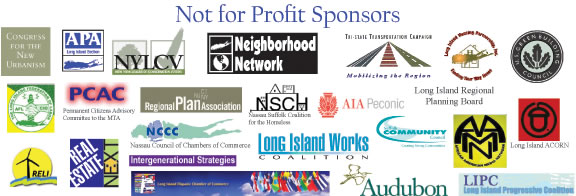






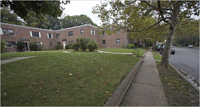
 On October 31, a crowd of an estimated 150 people gathered at Hostos Community College in the Bronx for a public hearing before the New York City Traffic Congestion Mitigation Commission. As part of Mayor Bloomberg's proposed PlaNYC 2030, congestion pricing has drawn considerable controversy. The series of public hearings held throughout the five boroughs, Long Island, and Westchester County, provided the opportunity for the public in each area to voice their comments and concerns on the plan and its local impacts.
On October 31, a crowd of an estimated 150 people gathered at Hostos Community College in the Bronx for a public hearing before the New York City Traffic Congestion Mitigation Commission. As part of Mayor Bloomberg's proposed PlaNYC 2030, congestion pricing has drawn considerable controversy. The series of public hearings held throughout the five boroughs, Long Island, and Westchester County, provided the opportunity for the public in each area to voice their comments and concerns on the plan and its local impacts. 
 News 12 Long Island recently covered Huntington Station's efforts to stop the "brain drain" on Long Island.
News 12 Long Island recently covered Huntington Station's efforts to stop the "brain drain" on Long Island. 
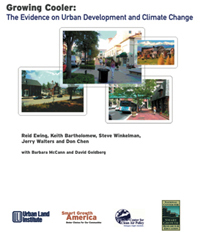





 All professions have specific languages and verbal peculiarities that may confuse the general public, with lawyers wielding ''torts and writs,'' football coaches deploying ''schemes and nickel packages,'' doctors employing ''illegible handwriting,'' and planners ''too often guilty of overusing the term 'smart growth' as an all-encompassing cure-all for traffic jams, environmental degradation and often just plain ugly development,'' said Southeastern Regional Planning and Economic Development District Executive Director Stephen C. Smith at a New Bedford Standard-Times land use forum, pointing out that since planners participate in ''setting and executing public policy, the last thing that we can afford to be is obscure and unclear.''
All professions have specific languages and verbal peculiarities that may confuse the general public, with lawyers wielding ''torts and writs,'' football coaches deploying ''schemes and nickel packages,'' doctors employing ''illegible handwriting,'' and planners ''too often guilty of overusing the term 'smart growth' as an all-encompassing cure-all for traffic jams, environmental degradation and often just plain ugly development,'' said Southeastern Regional Planning and Economic Development District Executive Director Stephen C. Smith at a New Bedford Standard-Times land use forum, pointing out that since planners participate in ''setting and executing public policy, the last thing that we can afford to be is obscure and unclear.''  The Harmony Entertainment Group is performing Hear Our Song at Candlewood Middle School in Dix Hills on November 10th, at 7:30 PM. This benefit concert is being held for the Friends of the Home of John Coltrane.
The Harmony Entertainment Group is performing Hear Our Song at Candlewood Middle School in Dix Hills on November 10th, at 7:30 PM. This benefit concert is being held for the Friends of the Home of John Coltrane.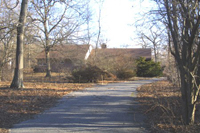 The Friends of the Coltrane Home in Dix Hills is a grassroots effort that has a strong dedication to continuing the musical legacy of John and Alice Coltrane. The Friends started in 2004 to save the home of the world-renowned jazz saxophonist from demolition. In addition, they have successfully had the home placed on the local, state and national Register of Historic Places. Immediate goals include saving the from further deterioration as well as creating new and exciting educational opportunities to expose local students to music.
The Friends of the Coltrane Home in Dix Hills is a grassroots effort that has a strong dedication to continuing the musical legacy of John and Alice Coltrane. The Friends started in 2004 to save the home of the world-renowned jazz saxophonist from demolition. In addition, they have successfully had the home placed on the local, state and national Register of Historic Places. Immediate goals include saving the from further deterioration as well as creating new and exciting educational opportunities to expose local students to music.





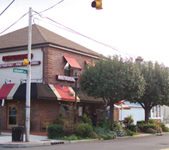
 The Long Island Arts Council at Freeport is sponsoring its Fifth International Music Composition Contest, open to composers of all ages around the world. The work, from three to five minutes in length, should be for vocal students between the ages of 14 and 17, with piano accompaniment geared to a student with five to seven years experience. Though contemporary, it should be appealing to young people. The deadline for the contest is November 30th and judging will take place in December. The winning submission will receive a $500 prize and will be performed in 2008.
The Long Island Arts Council at Freeport is sponsoring its Fifth International Music Composition Contest, open to composers of all ages around the world. The work, from three to five minutes in length, should be for vocal students between the ages of 14 and 17, with piano accompaniment geared to a student with five to seven years experience. Though contemporary, it should be appealing to young people. The deadline for the contest is November 30th and judging will take place in December. The winning submission will receive a $500 prize and will be performed in 2008.